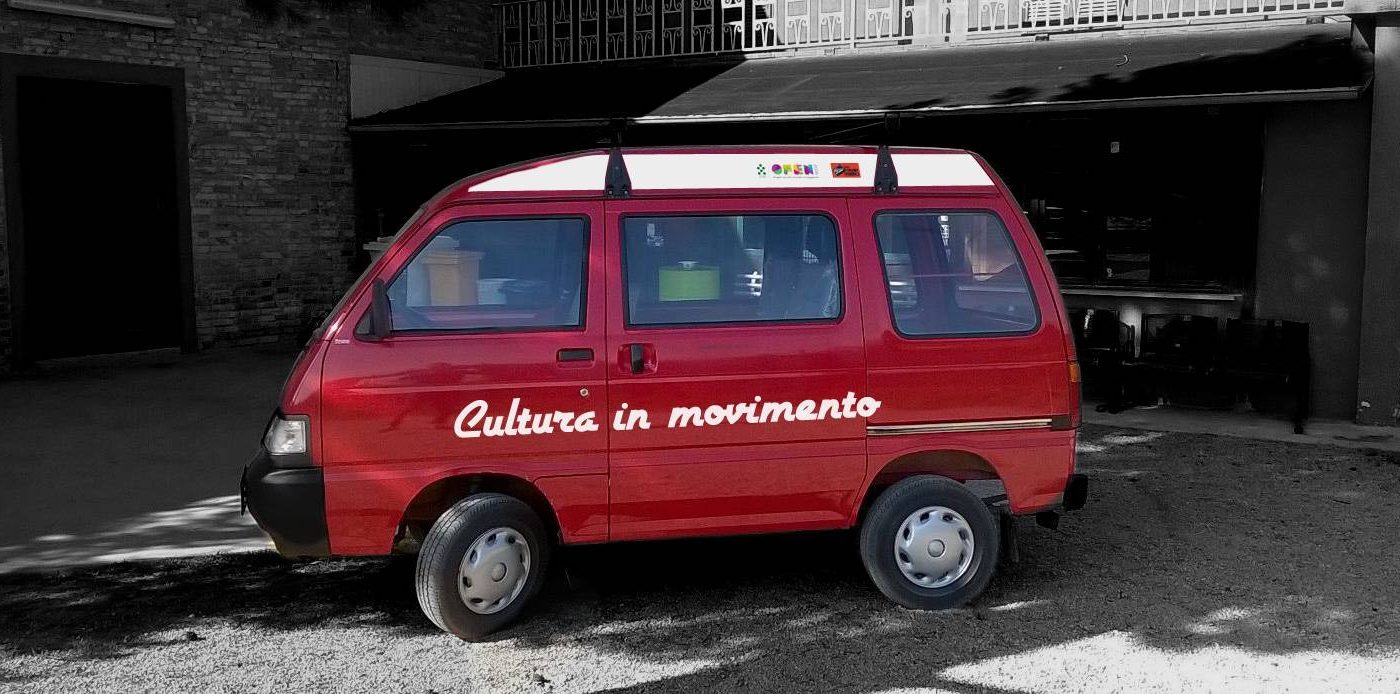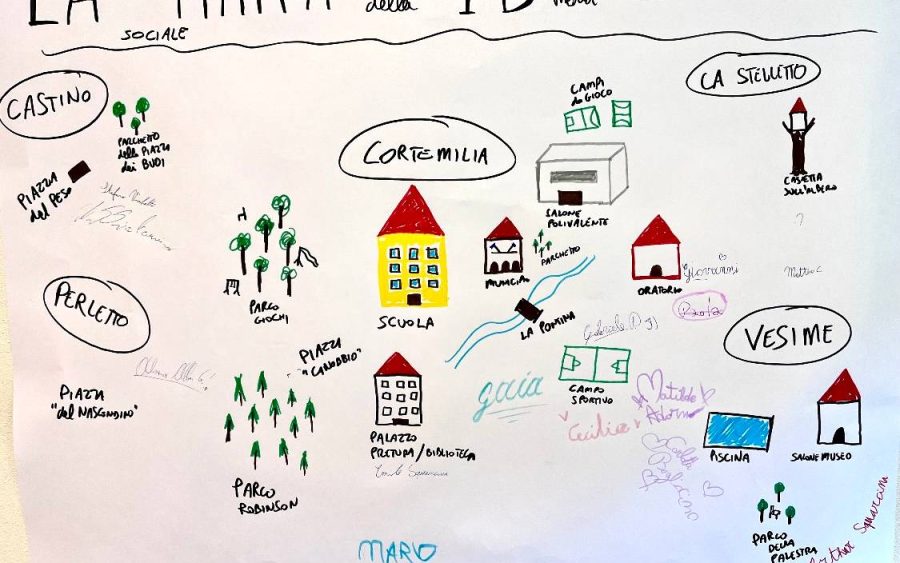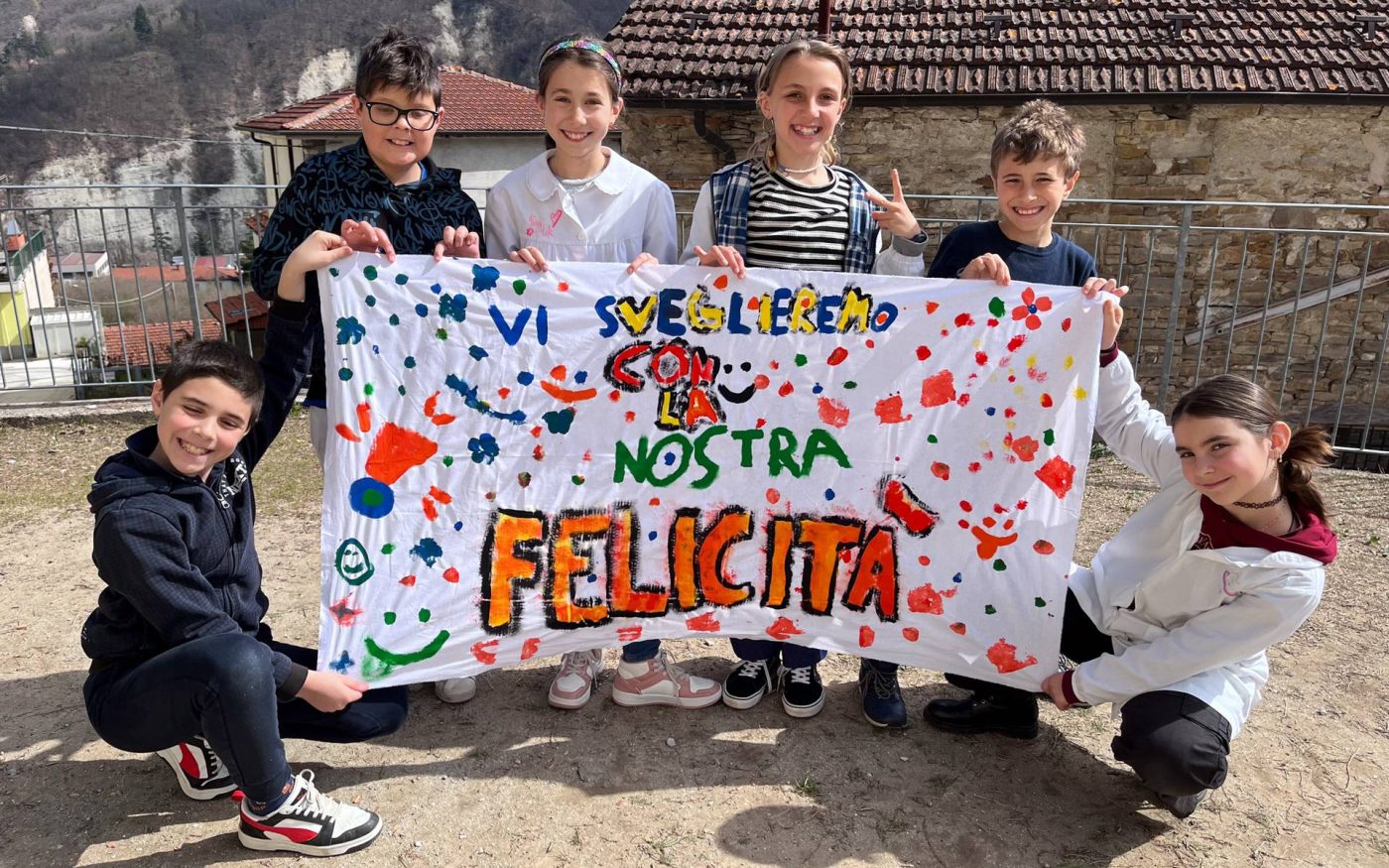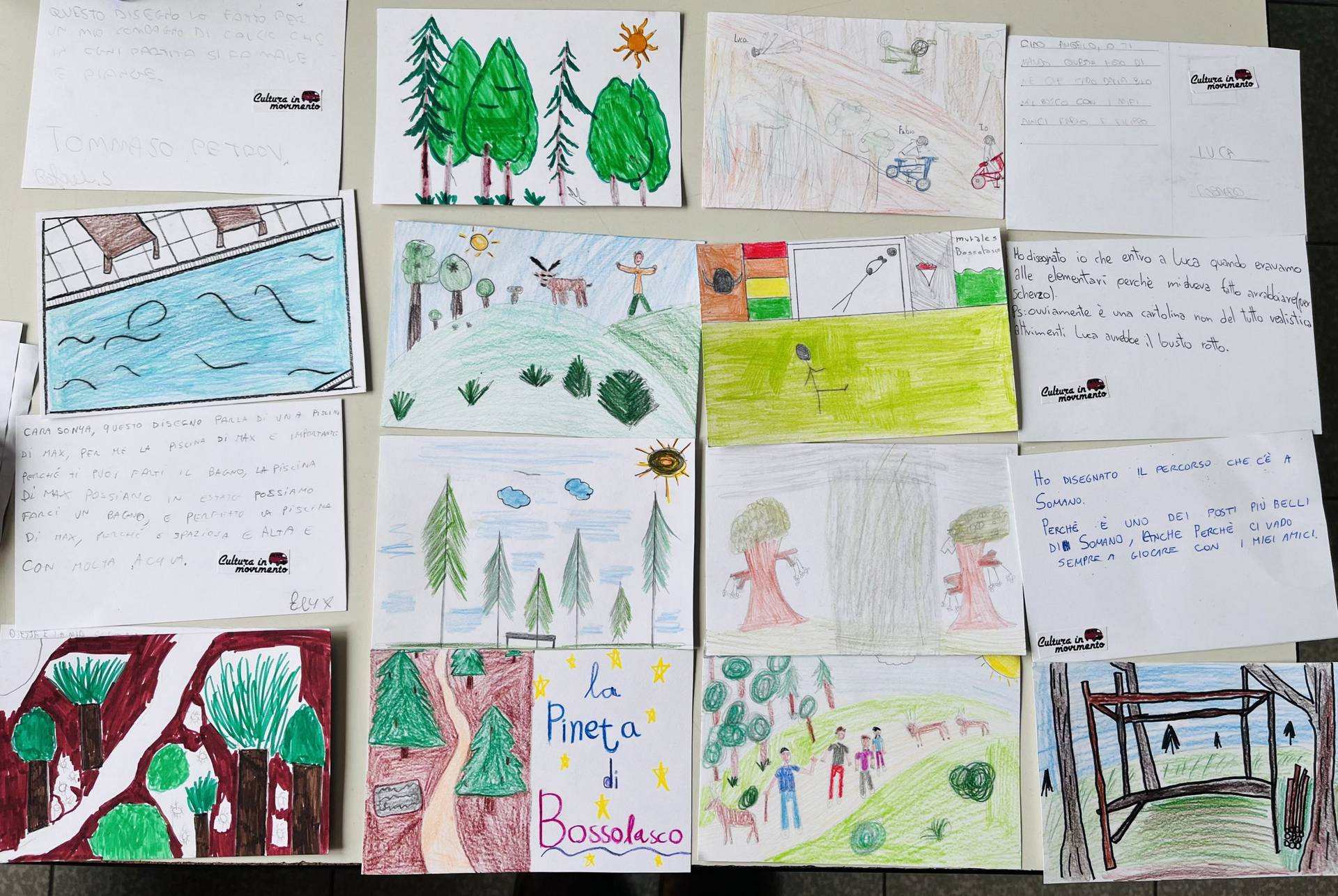Art and culture
Nessuno Resti Indietro A Project to Build Educational Communities in Alta Langa


How do you build an educational community in a fragile area like Alta Langa? How can we start by listening to children to imagine new spaces, relationships, and shared possibilities?
Nessuno resti indietro is a project born precisely from these questions. It is promoted by the Circolo Arci Cinema Vekkio of Corneliano d’Alba, a cultural and educational promotion association active for over twenty years, in collaboration with the Ambiente & Cultura association and with the direct involvement of the Comprehensive Institutes of Bossolasco-Murazzano and Cortemilia-Saliceto.
Putting children and adolescents at the center, recognizing them as full citizens, bearers of concrete needs and desires.
The heart of the project is clear: putting children and adolescents at the center, recognizing them as full citizens, bearers of concrete needs and desires. Through workshops, assemblies, participatory mapping, and public meetings, a network has been activated of schools, families, teachers, educators, and local entities, with the aim of bringing out – and realizing – the ideas of the youngest for a more open, inclusive, and sustainable community.
In this interview, we have gathered the voices of those who conceived, experienced, and carried out this experience firsthand: Giorgio Crana (president and manager of Cinema Vekkio), Claudio Gorlier and Alberto Contu (professional educators and founders of Cultura in movimento). A multi-voice narrative, between enthusiasm, challenges, dreams, and concrete possibilities for the future of our communities.
Giorgio — Our club, Cinema Vekkio, has existed since 1998 and, over the years, we began to question the meaning of the educational work we were doing in Corneliano and Piobesi. In 2016, our method — the result of years of street work and many experiences shared by Alberto and Claudio — took shape with a name: Cultura in movimento. The following year, satisfied with the path we had taken, we decided to step out of our comfort zone and bring that method elsewhere.

From there, we started operating in new contexts: among these, also managing the library in San Damiano. In Alta Langa, we had already participated in other calls, but when the opportunity arose to participate in a new project dedicated to children – always an interesting challenge – we immediately got involved.
In particular, we had already had a good experience with a national call promoted by Arci. We knew that, although complex, projects with the youngest can generate significant results. So we presented a proposal to the Comprehensive Institute of Bossolasco and Murazzano, which was already expressing the desire to build an educational community in the area.
The idea found support and we managed to involve the other comprehensive institute of Alta Langa, that of Cortemilia-Saliceto. We were also helped by a valuable recommendation: that of Marina, a teacher and our long-time volunteer, who works in Bossolasco and Murazzano.
From there, we also involved other entities, such as the Ambiente e Cultura association. A long co-design process began that led us to define the proposal, participate in the call, win it, and finally start the activities.
Today, after two years, we can say we have built a real community: a team made up of adults, but also of many boys and girls from middle schools. A result made possible thanks to the work of Alberto and Claudio. Now we are preparing to enter the third year.
Alberto — The specific objective is to create what is defined as an “educational community“. Usually, this term refers to a network of adults and associations that deal with education, sociality, and youth.
We tried to go beyond the traditional definition of “educational community” by ensuring that girls and boys are not just recipients, but true protagonists of the project.
ALBERTO cONTU
We, as Giorgio mentioned, also thanks to established relationships and some input from outside, have tried to go beyond this more traditional definition by ensuring that children and teenagers are not just recipients, but true protagonists of the project.
One of the fundamental axes is indeed the method of educational inquiry, which we carry out together with them, to activate democratic, educational, and social processes, starting from their reflections and needs.
Claudio — Our position is clear, and we declare it from the start: we consider young people as active subjects, full citizens, exactly like adults. That’s why it seemed coherent — and above all effective — to start from their point of view to understand what the real needs of the educational community were, in this case in the Alta Langa territory.
It’s an area that experiences phenomena of abandonment, poor connections between villages, and fewer and fewer spaces and proposals for young people.
Instead of building a network of adults proposing activities “from the top down” — a model that often generates an excess of ineffective initiatives — we deliberately chose to start from the young people, from their ideas, to try to truly revitalize this community.
Claudio — The starting point, which we always begin with, is the approach we adopt in the classrooms — in this case, we spent 90% of our time there.
In the first year, we carried out a structured educational path: we held about four meetings with a total of ten classes belonging to the two comprehensive institutes (from first to fifth grade), plus two after-school programs. In total, we involved about 250–300 young people.
The work began with an inquiry into places of the heart, those spaces experienced daily by children and full of meaning. Each place was represented by them in a postcard and narrated through personal stories. A map was also created, although these spaces are not always mappable.
In parallel, the Ambiente e Cultura group created the Great Map of Alta Langa Treasures, a more classic map, designed for adults, children, teachers, and educational figures. It collects content, experiences, and educational resources that emerged during the project, with the idea of offering a shared point of reference.
Secondly, during an assembly, the young people took action starting from a symbolic but powerful gesture: they chose to address the adult world with a sort of collective appeal — a “listen to us, we have something to say”. From there, 22 slogans were born, transformed into banners expressing desires and requests.
Those slogans evolved into models, concrete projects for spaces, events, and activities that are currently missing in their villages, but that they would like to see realized. A decisive step, which anticipated the creation of the assembly and the emergence of four central themes, then explored in depth in the second year.
Alberto will surely be able to list them better than me… (laughs)
A pedagogical and cultural center, a “Langa Taxi” to meet between villages, more attention to the environment and spaces where to rediscover traditional crafts: these are the desires of the young people of Alta Langa.
Alberto — Yes, so: the first is the desire for a pedagogical and cultural center. It’s not about building something new, but repurposing an existing space (a school classroom or a municipal hall) that can become a point of reference for girls and boys.
The second is what we’ve called the “Langa Taxi”: the difficulty of moving between municipalities limits opportunities for meeting. The young people have imagined a system that helps them move around and stay in touch.
The third concerns the environment, experienced as an active and relational space: it’s where they play, ride bikes, have experiences. It’s not just a backdrop, but an integral part of daily life.
The fourth point concerns the rediscovery of manual skills: workshops where they can learn concrete activities, from mechanics to cooking, from making ravioli to using tools.
Alberto — Yes, on these four themes we are already involving adults and local entities, because our project aims to be operational, not just a snapshot of the situation. That’s why we consider the map a tool for dialogue, rather than a simple means of documentation: it serves to build connections, not just to narrate.
Another fundamental aspect has been the training moments aimed at the community, particularly parents. We organized evenings with external experts: pedagogists, educators, sociologists. We talked about educational community, intergenerational dialogue, and the inquiry method.
At the end of the first year, we also invited a sociologist expert in internal areas, to offer an external but rooted perspective on the reality of territories like Alta Langa, because — as you’ve probably understood — our work is not about proposing an abstract idea of community: we work concretely on what’s there, on its resources, but also on its critical issues, starting from the fact that people actually live in those territories.
The goal is for the educational community to find a way to carry the project forward even beyond the grant deadline, perhaps by seeking new resources or opportunities.
CLAUDIO gORLIER
After two and a half years, we are reflecting on how to give continuity to everything that has been born. We have established the assembly — composed of class representatives, associations, and the adult world — which is working to translate the emerged themes into concrete actions. And we ask ourselves: “how can we make these paths sustainable over time and find the resources to make them grow?”.
Claudio — Also because, formally, the project will conclude in November. In May, we organized a public event to share what emerged: it was an important moment that made visible the contents that emerged from the collective work. In September, we will meet again for a large concluding assembly.
The goal is for the educational community to take charge of these issues and collectively find a way to carry them forward, even beyond the grant deadline, self-sustaining, perhaps by seeking new resources or opportunities. We don’t want the project to end.
Alberto — Now, from the parents, we have noticed real attention and participation, we are beginning to perceive an awareness: “Oh, but there are these themes, these issues…”. Then there’s the whole world of associations, schools, teachers.
A fundamental aspect has been managing to unite school teaching with our approach of social pedagogy.
Alberto Contu
A fundamental aspect has been managing to unite school teaching with our approach of social pedagogy. It’s never easy, because there are different times and logics, but despite the difficulties, the dialogue has happened. This is very important to us.
Claudio — Indeed, we’ve been a bit lucky in this regard: in the Comprehensive Institute of Bossolasco and Murazzano, there’s Bruno Bruna, a truly enlightened school principal. In his institutes, projects aren’t seen as mere bureaucratic tasks to be closed with a final report, but as real growth paths. This approach is reflected in the teachers, who are more involved and engaged.
We also have collaborations with local associations, such as the library or the Pro Loco, which we’d like to continue.
From an institutional perspective, local administrations haven’t yet played an active role, except during the final event of the second year, where they were present and impressed by the quantity and quality of work done.
We need to figure out how to transform all this planning into a proper discussion forum with institutions, to structurally advance what has emerged. As Alberto always says (he laughs, and Alberto laughs too), we need to “systematize the crossings”: transform the connections we’ve built into something lasting.
Alberto — If we’re talking about the “world of dreams”, I must say that some schools are already doing it in part. I’m thinking, for example, of Bruno Bruna who is working on a new educational pact with a banking foundation. But I’m also thinking about us: this work is not destined to be lost. In fact, we’re trying to include it in new funding opportunities to keep it going.
If I look at the ideal future, I imagine an evolution that involves the entire community.
Alberto Contu
If I look at the ideal future, I imagine an evolution that involves the entire community: for example, the 20 municipalities of Alta Langa deciding, based on their capabilities, to support some of the activities that emerged from this project.
Today we are still in a preliminary phase, but I see all this as a possible scenario. You asked me about our dream world, and that is: not only to “systematize”, but to do it in a real, practical way. We’re working on it, but we’re not there yet.
Claudio — Indeed, you perceived us as optimistic, and it’s true. But we are because we are very satisfied with the journey. The mere fact that these themes have emerged is extraordinary. Now they seem obvious to us, but they weren’t at all. When you work with pedagogical inquiry, you never know where it will lead. The fact that we’ve arrived at four shared macro-themes, resulting from the words and stories of the young people, is for us a great achievement.

And if I have to imagine the concrete realization of the project, I think precisely of what the young people have imagined: an educational and cultural hub where they can meet, hold events, experience the space as their own. Perhaps reachable with those “Langa taxis” they proposed. A place that brings together all the emerging issues, stitched into a real project. That would be our dream of dreams.
Claudio — Well, let me try to say it my way: it’s a simple answer, even if it might seem trivial. Nessuno resti indietro is first and foremost a working method built on a path carefully designed by us educators together with Giorgio. In this sense, it’s absolutely exportable.
The interesting thing is that, even if we brought it to another territory with the same tools, different needs and results would certainly emerge.
On “do we want to take it elsewhere”, I’ll let those who can really decide speak. But yes, it’s a project that can work in many other contexts.
Giorgio — I’ll make a joke: if there are funds, yes! (laughs)
Alberto — I’ll pick up on two things that Giorgio said jokingly, but which are actually very true.
In Alta Langa, there was a real network that made everything possible (a group of teachers, a school principal, associations, etc.)
Alberto Contu
The first is that we managed to work in Alta Langa because there was a community that wanted us. This makes a big difference: often, in projects related to youth policies, we start from a vague request: ‘do something for the young people’. Here instead, there was a real network that made everything possible (a group of teachers, a school principal, associations, etc.).
The second thing is precisely the issue of resources. Giorgio said it with a smile, but deep down it’s true: if you believe in a project, you have to invest in it. And it’s not a given, especially in the educational field, where there are still those who think you can do valuable things with little.
Giorgio — Indeed. For example, it was necessary to involve high-profile people at a national level. I’m thinking of Silvano Tagliagambe, Damiano Mantegazza, Federico Manzone, Giuseppe Tantillo just to name a few. People who have truly enriched the project on the educational reflection front.
Claudio — Look, I have one. It happened during the first year of workshops. After collecting stories and anecdotes from their villages, after preparing the plea to address the adult world, we asked the young people to choose a slogan, as if they wanted to organize a demonstration to be heard.
The phrase that came out was: “We will wake you up with our happiness.”

It was inspired by a real moment: one summer afternoon, a group of children on bikes had started riding around the village ringing bells, to “wake up” a somewhat sleepy community. That phrase, transformed into a slogan, in my opinion encapsulates so much.
The starting point is precisely them: the young people, their feelings, their visions, their goals. And that “we will wake you up with our happiness” is exactly this: their enthusiasm as a living force, capable of keeping our communities standing — and awake.
